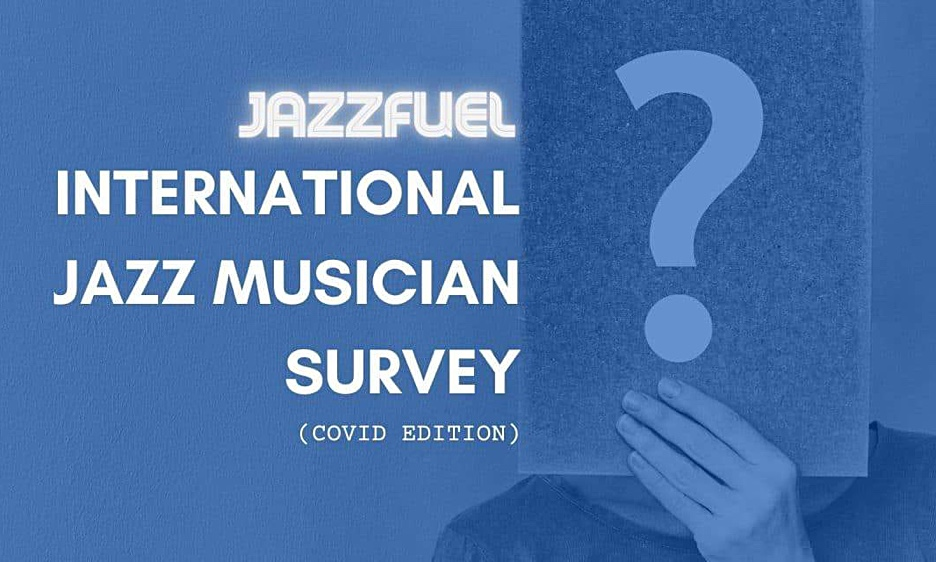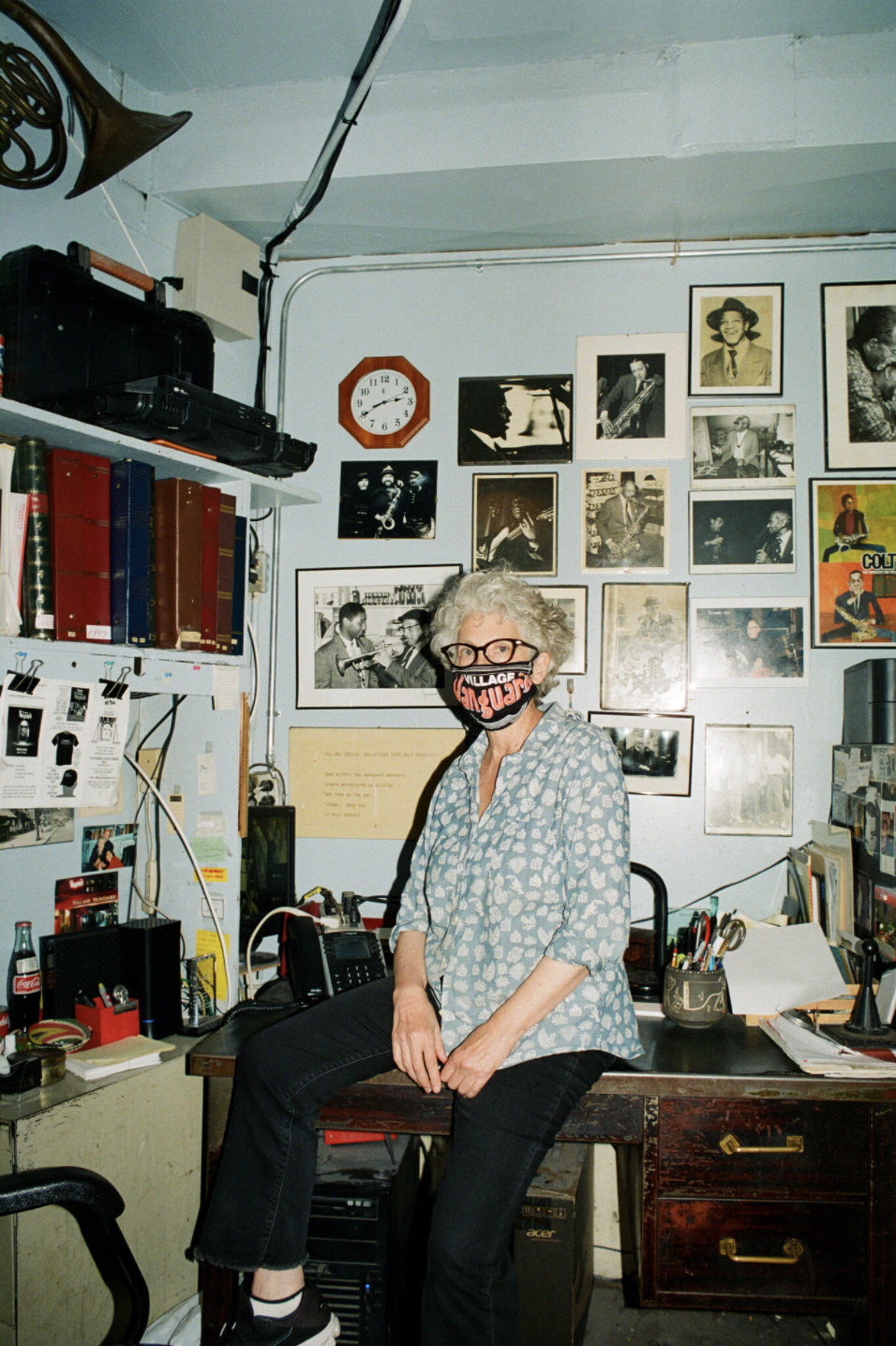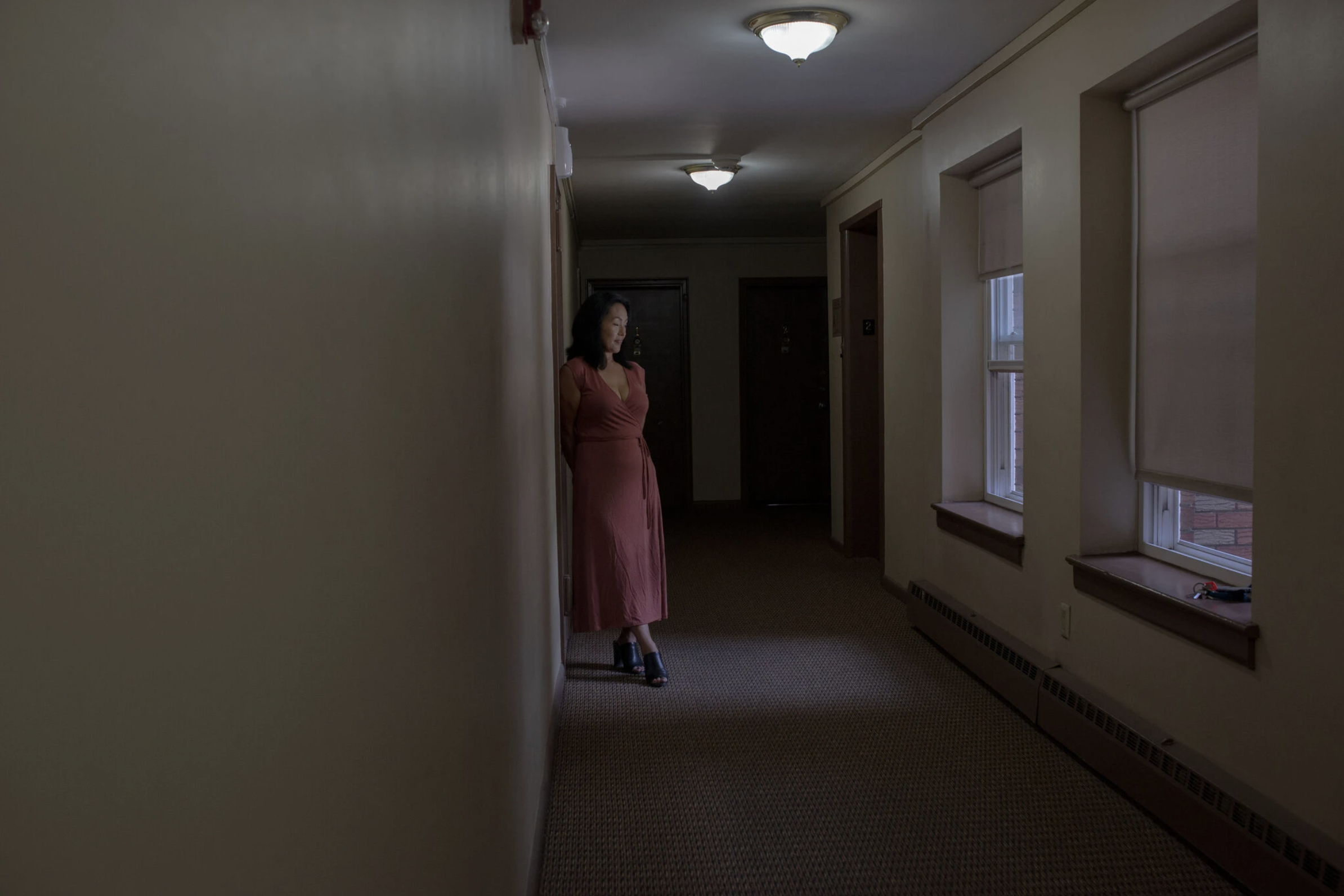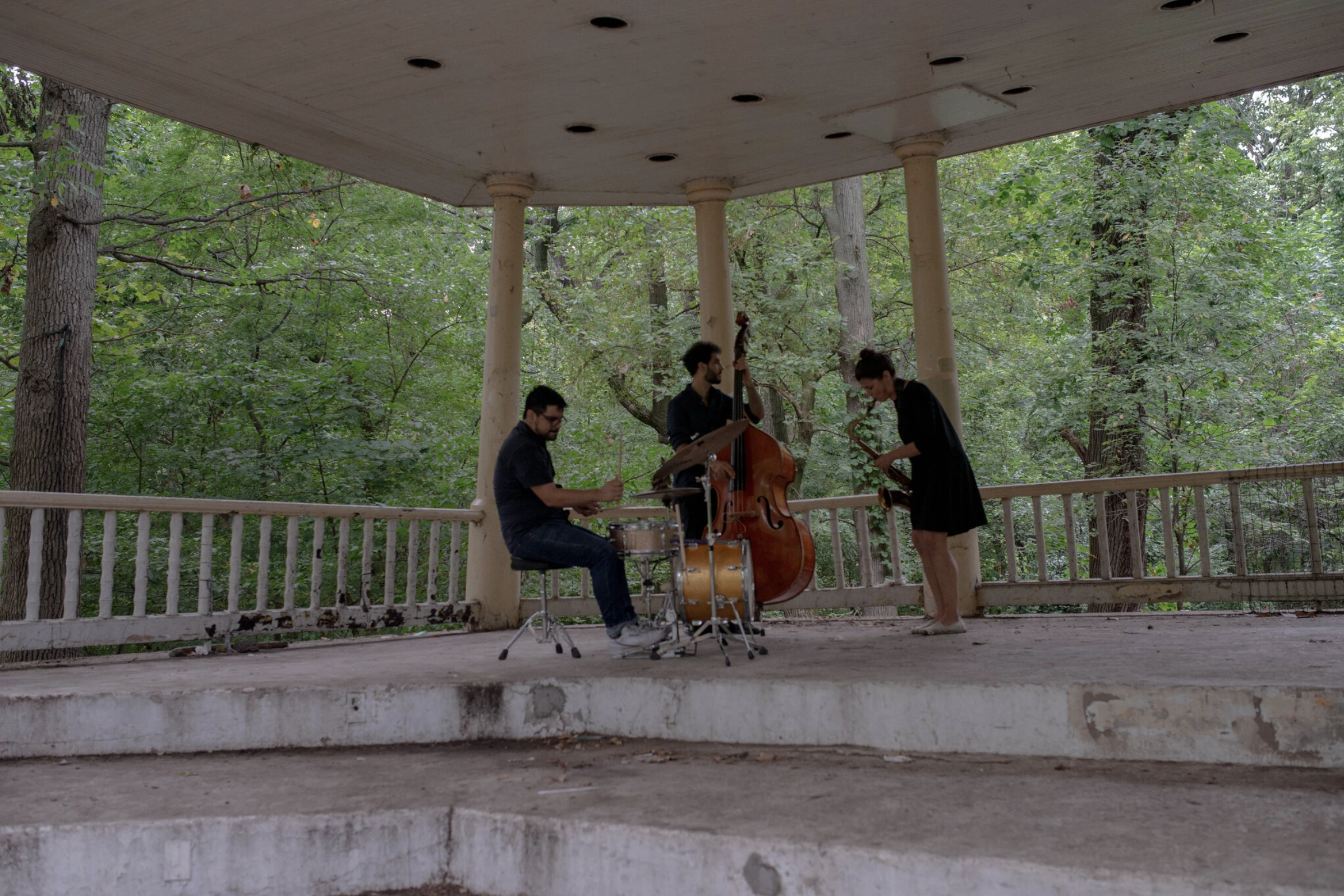PRS for Music Reports a 20% Downturn In 2020 — Issues ‘Warning of Difficulties to Come’
9 Out of 10 Musicians Say Their Mental Health Has Deteriorated During the Pandemic
Nearly 90 percent of professional musicians say that their mental health has deteriorated since the COVID-19 pandemic began last March, according to a study conducted by Help Musicians UK.
British Live Concert Industry Backs Vaccine Passports for Shows and Festivals
A Bright Spot in the Pandemic Gloom: Jazz Is Everywhere in New York
The New York Times’ Margot Boyer-Dry writes, “Musicians are playing al fresco all over the city to earn money and boost morale.”
Every night after her shift this spring, Bridget Queral would leave the hospital where she worked as a nurse to find her husband, Luis, waiting to walk her home. As they ambled through an eerily silent Central Park, Ms. Queral would shed the baggage from treating patients during the pandemic’s intense peak. The stroll became a highlight of the couple’s coronavirus routine, even with the lawns devoid of their usual crowds.
When the weather warmed and the virus, for the moment, waned, the sounds of instruments once again rippled through the heavy Manhattan air. “It was really emotional,” Ms. Queral said. “Luis describes it as a black-and-white movie turning to color.”
For many New Yorkers in late spring, hearing musicians performing outside again was a welcome sign of hope and resilience. Throughout the summer and into the fall, jazz tunes, in particular, have become a near-constant presence across the city’s parks, stoops and sidewalks. And that real-life soundtrack can make you feel like you’re walking through a vintage film by Spike Lee or Nora Ephron — not a city in crisis.
It’s easy to get swept up into the New Yorky romance of it all, until you remember that virtually all of the city’s 2,400 indoor performance venues have closed since the coronavirus outbreak, at the same time that concert tours have been canceled, putting countless musicians out of work.
Even so, these makeshift outdoor shows awaken a sense of connection that has been therapeutic for musicians and fans alike.
The communal catharsis reached a new peak on Nov. 7, when crowds descended on Grand Army Plaza in Brooklyn to celebrate the call of the presidential election. Since June, the Prospect Park entrance plaza had served as the regular venue for Wayne Tucker and the Bad Motha’s, who were dutifully playing on that sunny Saturday.
As Mr. Tucker and his fellow musicians played to the champagne-popping throngs, “everyone had so much love for each other,” Mr. Tucker said. “I felt like a messenger delivering that feeling to people.”
The Bad Motha’s are well practiced at delivering relief. Several times each week, they serenade parkgoers with a mix of jazz classics, originals and reinterpreted pop hits in a tight fusion reminiscent of Weather Report.
Keeping in touch with fans over Instagram, the group of 30-somethings has thoroughly charmed the community: One frequent audience member likes to cheer the players on, individually, by name. Another fan, reeling from a breakup, said the band had reawakened her sense of attraction. Even the police, who might in normal times ticket musicians for using amplifiers without a permit, tend to cast a blind eye to any potential violations as they nod along to the beat.
This summer the Bad Motha’s started playing outside to feel the thrill of performing in company after months of playing at home by themselves and found that they could make a bit of cash as well.
Mr. Tucker, who had planned to spend nine months of this year on the road, had flown home from an international tour in March, expecting to leave again soon. As weeks stretched into months and no new gigs appeared, he began to miss performing with others, so he organized a day of busking in the park for his roommates, the keyboard player David Linard, the saxophonist Miles Tucker (Wayne’s brother) and some friends, the bassist Tamir Shmerling and the drummer Diego Joaquin Ramirez.
“We didn’t think we sounded very good,” Mr. Tucker said, but “it got a great response, and we decided to keep doing it.”
Tips for a typical set, gathered through Venmo and an open bass drum case, tend to exceed, ever so slightly, the $100 standard club gig might bring in, Mr. Tucker said. Split among five band members, it’s not much. His group has also been lucky enough to play at socially distanced birthday parties and small weddings, which tend to pay more, but are scarce. In his free time, Mr. Tucker has been helping other musician friends move out of the city that they can no longer afford. He estimates that about half of his performing community is gone.
“It’s something of a sweet and bitter situation,” said Jerome Harris, a bass and guitar player who has toured extensively with jazz greats like the saxophonist Sonny Rollins and the guitarist and composer Bill Frisell. Recently, Mr. Harris has participated in the weekly Prospect Heights Community Jam, which takes place on a stretch of Vanderbilt Avenue in Brooklyn that has been cordoned off for pedestrians and outdoor dining. While connecting with the community has been a joy, he said, that connection arises out of necessity.
In a survey published by the Jazz Journalists Association last month, 61 percent of jazz musicians said their 2020 income would be less than half of last year’s. And 73 percent of American jazz musicians said they had no live performances scheduled for 2021.
Serving as a board member of the Music Workers Alliance, Mr. Harris has been seeking aid and work opportunities for musicians, many of whom are self-employed. So far, the organization’s calls to extend Pandemic Unemployment Assistance have gone unheeded, as have local proposals for safe, outdoor performance opportunities, along the lines of what musicians have been organizing themselves.
Even music schools have limited chances for artists to play together. Kellin Hanas, a freshman trumpeter at Manhattan School of Music, has been organizing busking trips to Central Park to comfort friends from other schools who have grown lonely livestreaming rehearsals from separate practice studios.
Ms. Hanas, an 18-year-old from Wheaton, Ill., can’t quite believe her new venue: “Central Park, holy cow! I saw this on the Disney Channel.” But as her fingers stiffen in the cooling air, she said, Ms. Hanas senses that these idyllic days are numbered.
In Harlem, Berta Alloway is likewise anticipating a wintertime end to the shows she has been hosting on Sunday afternoons in Riverside Park under the memorial to Ralph Ellison, the renowned local (and jazz fan) who wrote “Invisible Man.”
A longtime booker who is known for reinvigorating St. Nick’s Jazz Pub, a Harlem Renaissance landmark, Ms. Alloway has been inviting a rotating cast of players to her outdoor spot around 150th Street.
Patience Higgins, a multi-reed player who has toured with the Duke Ellington and Count Basie Orchestras, among other acts, often headlines with members of the Sugar Hill Quartet. The vocalist Maxine Brown, whose songs “All In My Mind” and “Funny” topped the charts in the 1960s, is also known to appear regularly.
Each week at Riverside Park, older jazz fans arrive early in Access-A-Ride vans to secure spots on benches before neighbors pour out from the surrounding buildings, clapping and swaying along with the players and greeting one another between songs. On one chilly Sunday last month, June Terry, a white-haired regular, was moved to dance to the singer Karl Dixon’s rendition of “Route 66.” The dancing also kept Ms. Terry warm.
Ms. Alloway, known as someone who makes opportunity where there is none, is unsure of what the winter holds. “It’s going to make me sick to my stomach,” she said of the weather forcing an end to her series.
Both Ms. Alloway and Mr. Tucker plan to return to the parks in the spring, particularly if the pandemic continues to block indoor performances. In the meantime, the morale they provide to the public, and the tips they receive in return, will go on pause.
This is not a typical autumn in New York, but that song’s lyrics resonate as deeply as ever: “It’s autumn in New York that brings the promise of new love. Autumn in New York is often mingled with pain. Dreamers with empty hands, they sigh for exotic lands. It’s autumn in New York. It’s good to live it again.”
Are Labels Pandemic-Proof? Sony Music Posts Impressive Quarterly Gains
International Jazz Musician Survey (COVID-19 Edition)
LONDON JAZZ VENUES REOPEN WITH RONNIE SCOTT’S, 606, JAZZ CAFÉ, VORTEX AND SPICE OF LIFE ALL ANNOUNCING SHOWS
Five of London’s main jazz clubs are reopening with social distancing measures in place as live music returns to the capital for the first time since March. And a considerable number of Ubuntu Music artists will be back in front of live audiences!
Jazz Lives in Clubs. The Pandemic Is Threatening Its Future.
New York Times’ writers Ben Sisario and Giovanni Russonello report that, “The entire concert industry is struggling as the Covid-19 shutdown continues. But a genre rooted in live performance and in-the-moment dynamics is in particular peril.”
Ken Sturm, one of the owners of the Iridium, said there’s a “50-50 chance” that the club, long a home for Les Paul, will not reopen.Credit...September Dawn Bottoms/The New York Times
When Christian Scott aTunde Adjuah led his septet at the Blue Note in mid-March, the headlines about coronavirus were growing more urgent by the day. But Mr. Adjuah, a New Orleans-born trumpeter with a cutting-edge style, had no idea that those performances would be his last shows — or the Blue Note’s — for the foreseeable future.
“You know, wash your damn hands,” he told the crowd, as can be heard on “Axiom,” a new live album culled from that weeklong residency. “But we’re not running.”
The concert world as a whole is in crisis, but perhaps no genre is as vulnerable as jazz, which depends on a fragile ecosystem of performance venues. In pre-pandemic New York, the genre’s creative and commercial center, young players still converged to hone their craft and veterans held court in prestigious rooms like the Village Vanguard and the Blue Note. It’s an economic and creative network that has sustained the genre for decades.
But after suffering nearly six months of lost business, New York jazz venues have begun sounding the alarm that without significant government relief, they might not last much longer. Even with support, some proprietors said, the virus may have rendered their business model extinct.
One such room is the Iridium, a subterranean 170-seater near Times Square that was the longtime home of the guitar legend Les Paul. “There’s a better than 50-50 chance that the Iridium doesn’t reopen,” said Ken Sturm, one of its owners. “Small clubs like us are not going to exist anymore,” he added.
Ken Sturm, one of the owners of the Iridium, said there’s a “50-50 chance” that the club, long a home for Les Paul, will not reopen.Credit...September Dawn Bottoms/The New York Times
Most clubs have begun hosting livestreamed performances without in-person audiences, providing some opportunity for musicians to return to work. But without the ability to practice their art in a tightly packed room — breathing the same musty air as their audiences and feeling their response in real time — musicians say they have lost access to the jazz world’s most fertile terrain.
“It’s always been my laboratory,” the renowned saxophonist Charles Lloyd said in an interview. “We need these venues, and it breaks my heart.”
Mr. Lloyd, 82, played with giants like Chico Hamilton and Cannonball Adderley while living in New York in the early 1960s, on his way to becoming a million-selling crossover star in his own right. “You can bounce stuff off the audience,” he said. “That experience is invaluable. You can’t put a number or anything like that on it.”
In interviews, jazz musicians young and old expressed worry for the health of the genre, and their own careers, if the venue network in New York winds up decimated.
Donny McCaslin, a saxophonist and bandleader, came to the city 30 years ago and worked the club trenches for years, learning on his feet and making a living gig by gig. That dexterity was part of what led him to be hired for “Blackstar,” the final album by David Bowie, who saw Mr. McCaslin perform at the tiny 55 Bar in the West Village one night in 2014.
The saxophonist Donny McCaslin said losing the city’s network of clubs, a proving ground for young musicians, would be “devastating.”Credit...September Dawn Bottoms/The New York Times
“Part of the beauty of the local music scene here was that you would be stepping into these different environments night after night, and having to negotiate the different music,” Mr. McCaslin, 54, said in an interview. Early in his career, he said, a typical week might mean a big band show at one club followed by blues at another.
For younger musicians, Mr. McCaslin added, losing that system would be “devastating — it’s a breakdown of one of the most vital parts of how they develop.”
Jazz clubs are among the more than 2,000 constituents of the newly formed National Independent Venue Association, which has been lobbying Congress to be included in its next coronavirus relief bill. Progress has been slow, as the venues jockey for Washington’s attention alongside restaurants, movie theaters and the thousands of other businesses that have suffered.
Among the organization’s members is the Village Vanguard, which opened in 1935 and draws tourists from around the world to its narrow, wedged basement on Seventh Avenue South. Its vast legacy includes landmark live albums by John Coltrane, Bill Evans and Sonny Rollins. But that may not be enough to weather a year or more without business, said its owner, Deborah Gordon.
“History gives you a nice mantle,” Ms. Gordon said. “But history doesn’t protect you.”
Deborah Gordon, the owner of the Village Vanguard, said, “We wouldn’t be doing streaming if we didn’t have any hope.” Credit...Sabrina Santiago for The New York Times
The venue association gained an important ally last month in Chuck Schumer, the Democratic leader in the Senate, who agreed to be a co-sponsor of the Save Our Stages Act, a $10 billion bill that would authorize grants to independent venues, promoters and other parties in the live music business. At a news conference outside Baby’s All Right, a rock and dance club in Brooklyn, Mr. Schumer said that allocating relief for venues “shouldn’t be that hard.”
In the meantime, jazz’s nationwide network has already begun to crumble. In Washington, a number of clubs have closed since the start of the pandemic, including Twins Jazz, which had been the last full-on jazz club on the city’s historic U Street corridor.
Venues operating under a nonprofit model have found alternative means of support during the pandemic, and in some ways they have had more room to be creative. “There are a lot of grants available to nonprofits for Covid that were not available to for-profit venues,” said Rio Sakairi, the artistic director of the Jazz Gallery, a nonprofit in the Flatiron district.
Rio Sakairi, the artistic director of the Jazz Gallery, outside her home in New Jersey.Credit...September Dawn Bottoms/The New York Times
Livestreaming, which became ubiquitous in pop soon after the pandemic hit, has been gradually embraced in jazz — with nonprofits taking the lead. Shortly after lockdown began, the Jazz Gallery began using Zoom for what it called Happy Hour Hangs and Lockdown Sessions, where audiences could talk to musicians and listen to recordings from the safety of their own homes.
Smalls, known for its late-night jam sessions, and recently incorporated as a nonprofit, was the first New York jazz club to livestream from its stage amid quarantine. That was on June 1, and soon numerous other clubs — among them the Vanguard, Birdland and the Jazz Gallery — followed suit; the Blue Note will join the bandwagon this month.
At best, venue proprietors said, the streams may pay for themselves and give some work to musicians eager to play — but they are less a long-term plan than a gesture of perseverance.
“We wouldn’t be doing streaming if we didn’t have any hope,” Ms. Gordon said of the Vanguard.
The jazz scene “is on life support,” said the vibraphonist Joel Ross.Credit...September Dawn Bottoms/The New York Times
For musicians, the evaporation of live performance has been both a financial hazard and a creative frustration. Melissa Aldana, a 31-year-old saxophonist, said in an interview that in July she left her rent-stabilized apartment on the Upper East Side — “the nicest place ever, the greatest deal” — for Prospect Lefferts Gardens in Brooklyn, to be closer to friends and fellow musicians during quarantine. Now she hosts socially distanced jam sessions at her home once a week, and plays with a group in Prospect Park.
“What I’m missing is just, like, having the experience to play with musicians and connect,” Ms. Aldana said. Before she moved to Brooklyn, in the dark days of spring, Ms. Aldana leaned heavily on the Jazz Gallery’s Happy Hours: “That really kept me going a couple months, just having that human contact when I wasn’t able to see anybody.”
Looking ahead, the vibraphonist Joel Ross expressed a mix of anxiety and hope for the future. Mr. Ross, 25, established himself in the New York jazz world over the last few years through constant gigging. Like most, he saw his busy performance calendar dry up once the pandemic hit, and he began collecting unemployment. The larger jazz scene, he said, “is on life support.”
But Mr. Ross also noted the optimism that has come with livestreams, outdoor performances and other adaptations that have kept musicians busy. Some events, he said, have paid as much or more than a regular gig.
“People are always going to want to see the music,” Mr. Ross said. “Whether the venues survive themselves, the music is going to press on.”
Melissa Aldana, right, playing with friends in Brooklyn’s Prospect Park.Credit...September Dawn Bottoms/The New York Times
SURVEY: ‘64% musicians considering leaving the music profession’
LJN’s Peter Bacon reports: “A new survey reveals that 64% of musicians polled are considering leaving the music profession. The survey, conducted by the online musician booking platform, Encore Musicians, has revealed that the UK music industry is in a state of crisis as a result of the coronavirus pandemic.”































